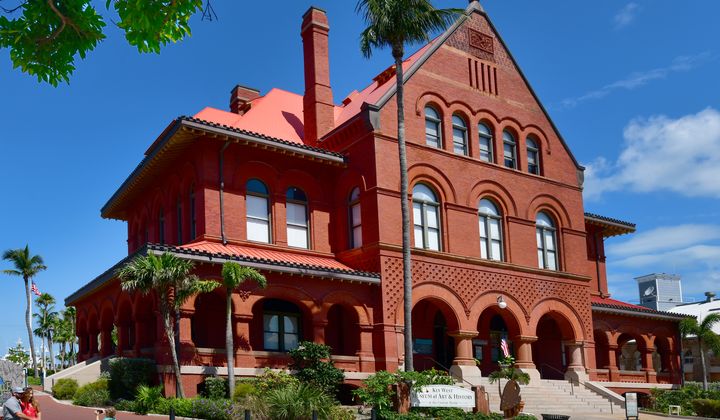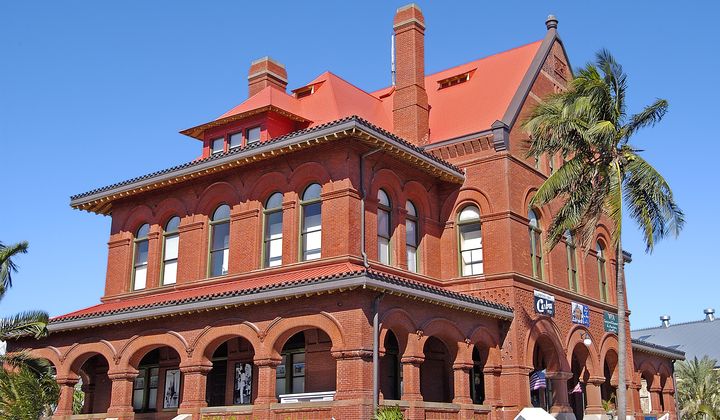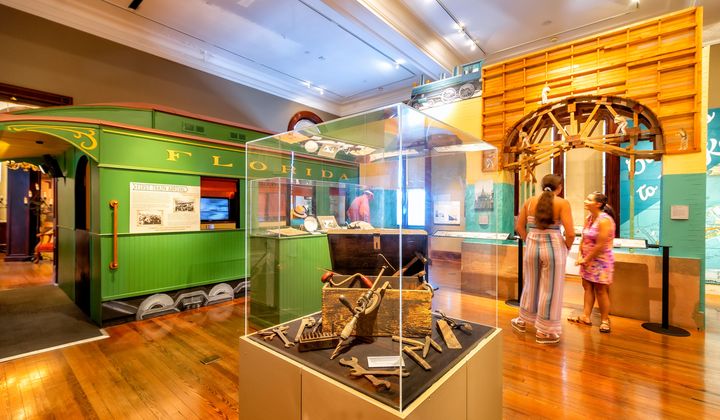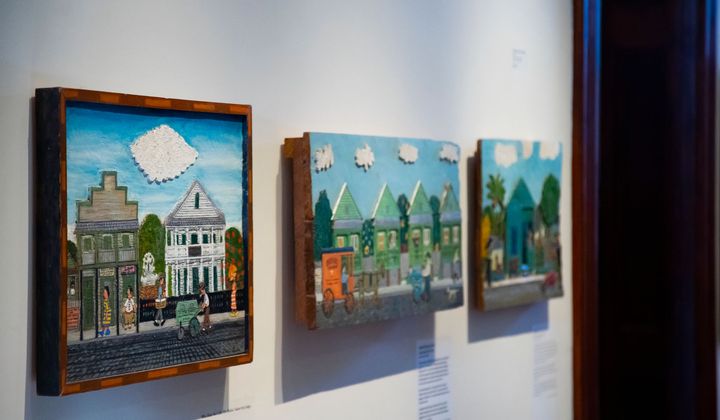Key West Museum of Art & History
281 Front Street, Key West, FL 33040 - United States
Originally home to the island’s customs office, postal service, and district courts, this four-story architectural marvel was built to keep pace with the increasing population and wealth accumulating from Key West’s lucrative trade routes and maritime industries. The imposing structure is a tremendous exemplar of Richardsonian Romanesque architecture which was typical for Federal building projects near the end of the 19th century.
Positioned adjacent to the U.S. Naval base, the Custom House was the site of many significant historical events, most notably the inquiry into the sinking of the USS Maine in Havana harbor in 1898.
In 1932, the building transferred to the U.S. Navy and became headquarters for their Caribbean and Gulf of Mexico operations. When the Navy no longer required use of the building, it was declared surplus and abandoned for nearly twenty years. The Custom House was eventually purchased by the State of Florida’s Land Acquisition Advisory Council in 1991 and leased to the Key West Art & Historical Society for use as a museum.
Today, “Old 91” has been faithfully restored and stands on the harbor as a national landmark, an award-winning museum and official headquarters of the Key West Art & Historical Society. Experience two floors of exhibitions that weave together two centuries of history, art, people, and events.
Exhibits
Key West 200
A Bicentennial Exhibit Celebrating 200 Years of the Island's Permanent Settlement
Custom House Museum First Floor
January 21 - December 11, 2022
The Key West Art & Historical Society is pleased to announce the opening of “Key West 200” a major exhibition commemorates the 200th anniversary of the first permanent settlement of Key West in 1822 and will be on display in the Bryan and Bumpus Galleries at the Custom House Museum, 281 Front Street.
The exhibit will highlight Key West’s people, culture and community beginning with the settlers and government officials who arrived on this remote island in early 1822. It will feature rarely displayed artifacts that tell the story of the people, industries, migration, culture and architecture that shaped Key West over the course of two centuries. Divided by decade, the exhibit emphasizes many of the significant moments and people that have influenced so much of what we celebrate today.
“In essence, Key West’s history begins very much like other traditional small towns dotting the country. The distinction between our island and other small towns, aside from the remoteness, is that once their local industries plummeted, they suffered long-term consequences with many residents relocating in search of fresh opportunities,’ says Cori Convertito, curator of the Key West 200 exhibit. ‘Not Key West. Residents have endured several industry collapses during its two-century history, but they regrouped, dusted themselves off and found the next successful business. Even now, in a way, the island continues to reinvent entirely like its ancestors did; this is owing to the persevering people who call this island ‘home’.”
Visitors to the exhibit will learn how Key West grew during its history through development and changes in migration patterns, advances in transportation and commerce, and historical milestones like the Civil War, the Great Depression and World War II. Centerpiece artifacts include sponging equipment; cigar roller tables and tools; 19th century homewares, clothing, journals and photographs; Overseas Railway memorabilia; Ernest Hemingway’s boxing gloves; Native American tools; Key West Hand Print dresses and artwork created by Cuban-American folk artist Mario Sanchez.
“When developing this exhibition, it was important that we did not focus solely on the dates, events and people that most of us already know,” explains Convertito. “Museum visitors who imagine that Key West has always been a tourist destination will be delighted to discover that tourism is only a tiny portion of the story. The true breadth, depth and diversity of this island is so much more – a remarkably captivating history to celebrate.”
Participation in Museum Day is open to any tax-exempt or governmental museum or cultural venue on a voluntary basis. Smithsonian magazine encourages museum visitation, but is not responsible for and does not endorse the content of the participating museums and cultural venues, and does not subsidize museums that participate.





